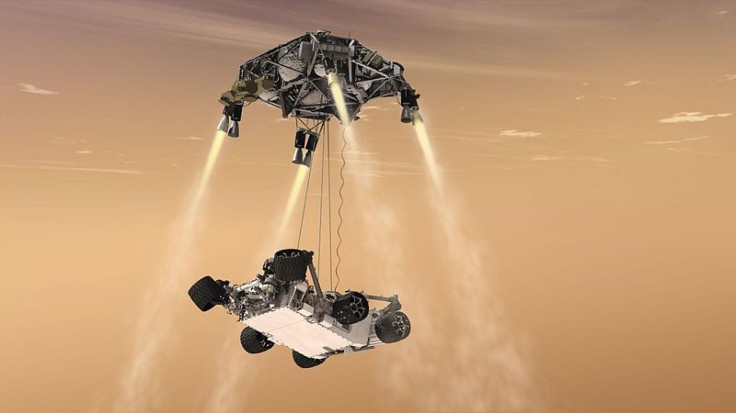Curiosity Mars Rover Landing Preview: 'Seven Minutes Of Terror' In Space

Get ready for an extraterrestrial robotic family reunion: Curiosity will soon be joining its siblings Sojourner, Spirit, and Opportunity on the surface of Mars. The latest NASA rover is scheduled to touch down on the Red Planet at around 1:30am Eastern Time on Monday.
If you yourself are curious about how the landing turns out, NASA will be streaming video online starting at 11:30pm Eastern. There are also live watching events at museums and science centers across the U.S. New York City will get to watch the landing on a very big screen - the Toshiba Vision screen at One Times Square, which is usually the focal point for the New Year's Eve ball drop.
"When you think of all the big news events in history, you think of Times Square, and I can think of no better venue to celebrate this news-making event on Mars," NASA administrator John Grunsfeld said in a statement.
Curiosity has a tricky landing to stick. It'll be hurtling towards Mars at 13,000 miles per hour, decelerating once it hits the atmosphere. As it plummets through the atmosphere, it'll get down to 1,000 mph, a hard braking that will cause its heat shield to heat up to about 2500 degrees Fahrenheit.
While still going at supersonic speed, the capsule carrying the rover will deploy a special parachute to bring its speed down to 200 mph. When the capsule descends to about one mile above the Martian surface, it opens and drops Curiosity and its descent stage. The descent stage is a platform with jets that will thrust against the planet's gravity until the rover is hovering about 50 feet off of the ground.
The rover will be lowered the last few feet by a "sky crane" - a bundle of wires and cables that will gently place Curiosity on the ground. The rover then severs the connection to the sky crane and descent stage, which will propel itself about 500 feet away and then make a crash landing, making sure to avoid collapsing on top of the rover.
During the landing, Curiosity's spacecraft will be coordinating the split-second timing of hundreds of processes over an extremely short timeframe. It's not for nothing that NASA has dubbed this descent "Seven Minutes of Terror."
Curiosity's descent via sky crane is the most complicated mechanical ballet that NASA's performed on Mars thus far. All of the extra measures are needed to deal with Curiosity's weight. The rover alone weighs about one ton and is the size of a car, dwarfing Opportunity and Spirit, which weigh in at 400 pounds each.
"Previous rovers placed on Mars were much smaller. They could use an airbag descent mechanism, which is about exactly what it sounds like," says Tim Nichols of Siemens Industry Automation, which made the software that NASA's Jet Propulsion Labs used to create virtual models of Curiosity and test how various parts will perform under various stresses.
Of course, surviving the terrifying descent is just the first step of Curiosity's mission. After landing, the rover has to deploy its instruments: a color video camera, two color still cameras, a special laser that can vaporize rock and analyze the light emitted to determine a sample's chemical composition; and more.
Curiosity will be searching for traces of biosignatures -- the chemical building blocks of life -- to try and see if Mars could have ever supported life at some point in its history. It will also be sampling the soil and rocks of the Red Planet so scientists can better understand what kinds of forces shaped the planet's geological record.
"It's a very exciting mission," Nichols says. "We all see it as a crucial step towards manned missions to Mars in the future."
© Copyright IBTimes 2025. All rights reserved.





















